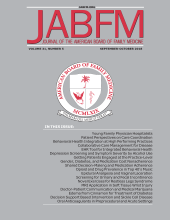Abstract
Purpose: Internet-based patient portals are increasingly being implemented throughout health care organizations to enhance health and optimize communication between patients and health professionals. The decision to adopt a patient portal requires careful examination of the advantages and disadvantages of implementation. This study aims to investigate 1 proposed advantage of implementation: alleviating some of the clinical workload faced by employees.
Methods: A retrospective time-series analysis of the correlation between the rate of electronic patient-to-provider messages—a common attribute of Internet-based patient portals—and incoming telephone calls. The rate of electronic messages and incoming telephone calls were monitored from February 2009 to June 2014 at 4 economically diverse clinics (a federally qualified health center, a rural health clinic, a community-based clinic, and a university-based clinic) related to 1 university hospital.
Results: All 4 clinics showed an increase in the rate of portal use as measured by electronic patient-to-provider messaging during the study period. Electronic patient-to-provider messaging was significantly positively correlated with incoming telephone calls at 2 of the clinics (r = 0.546, P < .001 and r = 0.543, P < .001). The remaining clinics were not significantly correlated but demonstrated a weak positive correlation (r = 0.098, P = .560 and r = 0.069, P = .671).
Conclusions: Implementation and increased use of electronic patient-to-provider messaging was associated with increased use of telephone calls in 2 of the study clinics. While practices are increasingly making the decision of whether to implement a patient portal as part of their system of care, it is important that the motivation behind such a change not be based on the idea that it will alleviate clinical workload.







